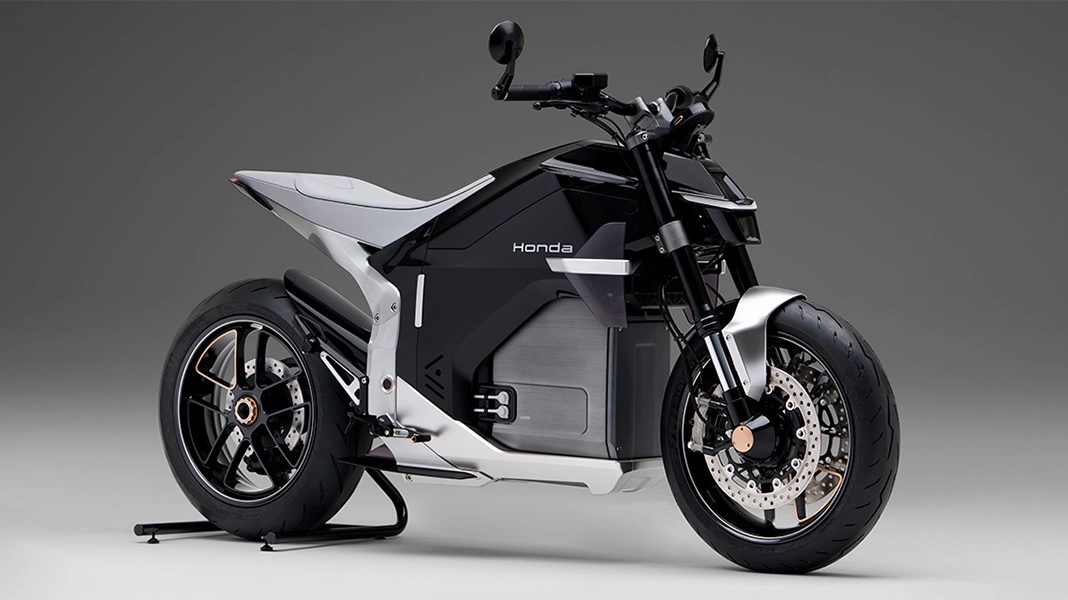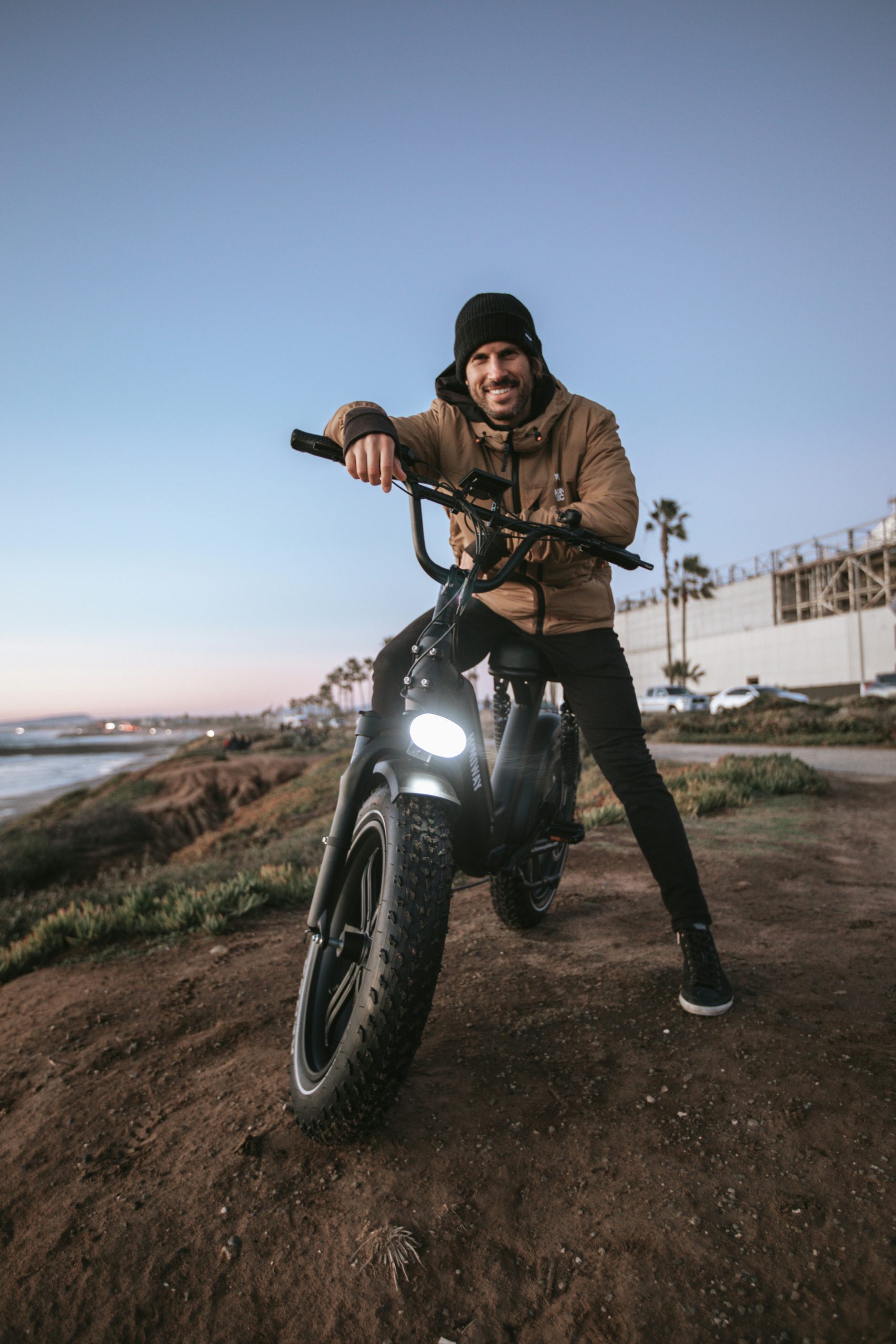Over the last three years (post-COVID), we have seen an increasingly stronger play of electric two-wheelers and urban mobility at EICMA. This year was no different. Presenting in no particular order, except for the most important at the start, and saving the cutest for the very last.
Honda
Honda came with two EV concepts. The EV Urban is a large commuter scooter, much like an overgrown PCX. The styling theme follows the BMW CE 04, especially with the seat treatment. No performance details are available; this is still a concept.
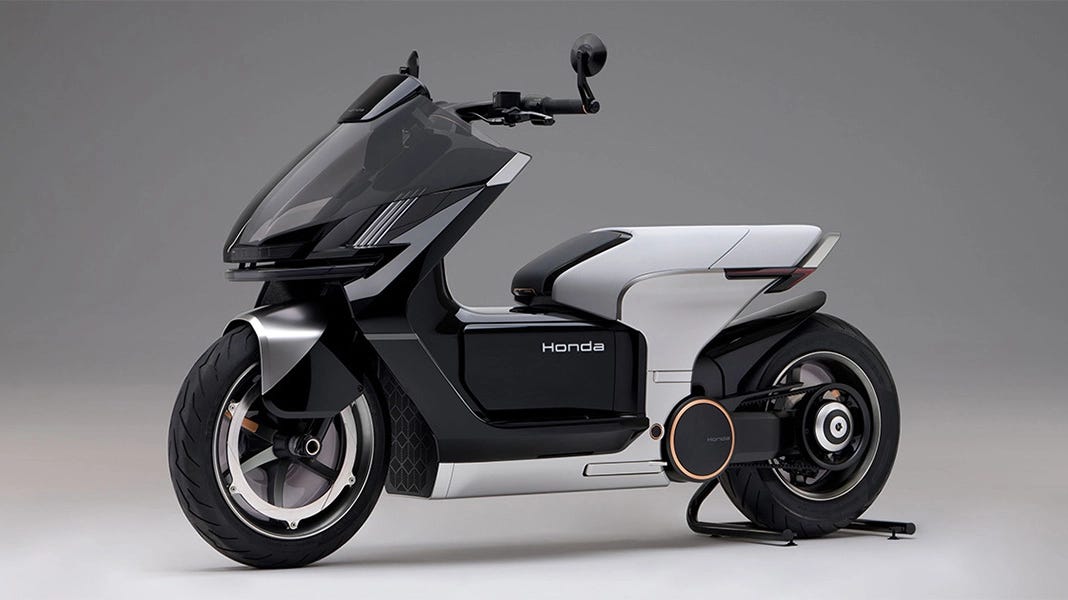
The EV Fun (top pic) is a motorcycle concept that Honda says points to an upcoming electric motorcycle next year. The size of the front forks and disc brakes point to a mid-capacity motorcycle that may target A2 license holders.
Honda says that the EV Fun would have a cruising range of 100km+. The range of a moped on a highway-dwelling motorcycle is not impressive, though Honda supplements it with an onboard CCS 2 charger.
The CCS 2 (and the probable high-power motor) also indicates a high-voltage system, which means that MPP was never an option. It would be interesting to see if Honda settles for 120V—200V or takes this to 400V.
However, Honda was not all about concepts at EICMA. What is not a concept is the CUV e: scooter (below). This commuter scooter is based on the SC e: concept that Honda debuted in Tokyo in 2023 and will launch in multiple markets before the end of this year. We covered the SC e: and Honda’s electric two-wheeler plans in detail a few weeks back, here and here.
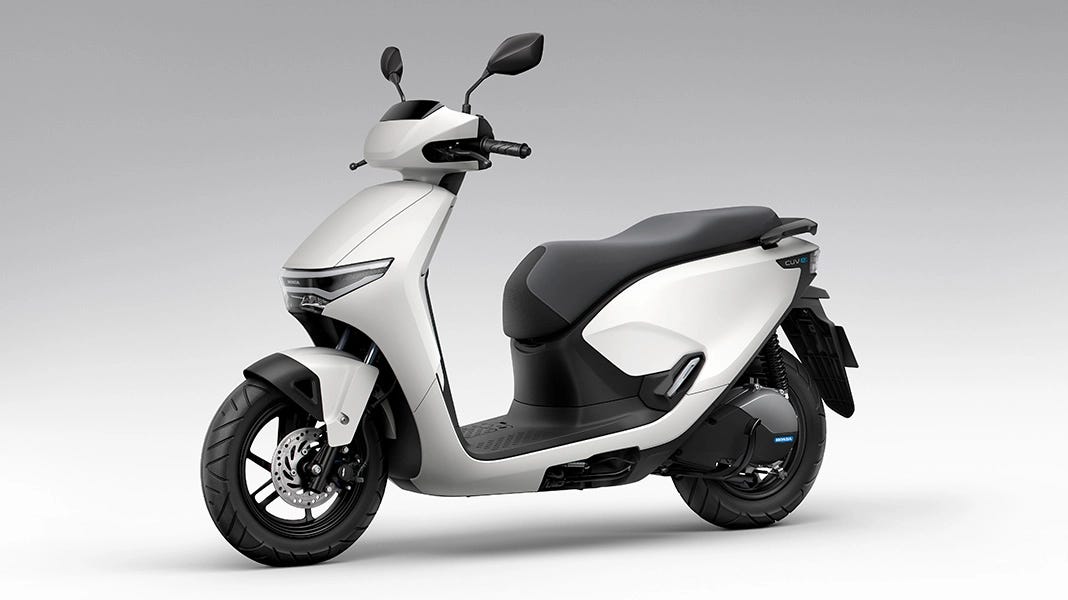
The markets include high-volume markets like India and Indonesia. Honda is the ICE scooter leader in both markets, with a 50-percent+ market share. This makes the CUV e: a very important product, as Honda would like it to supplement the ICE range before gradually replacing it in sales. The Indonesia launch announcement was already made in October.
The CUV e: uses Honda Mobile Power Packs (MPPs), two of which go under the seat. The pictures suggest a compact scooter with agile handling and a nimble demeanor. The compact wheelbase also means that this won’t have a sizable under-seat boot space.
To us, this appears like a no-fuss, neutral scooter with likely high levels of quality and practicality. Honda projects a 110cc scooter with matching performance. In Indonesia and India, the 110cc engine size is very popular in ICE commuter scooters.
The CUV e: is likely powered by a 6kW mid-drive motor with a top speed above 80 kph. Depending on the market, the Honda MPPs would be 1.3kWh—1.475kWh each. The Honda MPP means a battery-swapping network could be a play. Honda has been conducting a pilot in India for some time and announced that it would start a battery-swapping pilot in Europe. However, we don’t think that battery swapping would be the only play here as Europe, India, and Indonesia are all large geographies (unlike Taiwan), with the latter two also heavily populated.
The start of Honda’s electrification is important as it would be the first major manufacturer to introduce electric scooters in three major markets simultaneously. We exclude China from this discourse as Honda has been actively selling pedelecs and electric mopeds in China for some time now through its two local JVs.
Silence
Silence is important to the E2W industry. They are the only surviving participants of the first European EV renaissance; others, like Unu, Askoll, Etergo, Govecs, and Torrot, have died, been acquired, or changed business models.
Not that Silence has survived in its original state—it survives and is steady, thanks to Acciona’s acquisition and its working relationship with SEAT (VW Group). We have always considered Silence a manufacturer of large and expensive scooters and rather small cars; all mated to a large trolley battery pack. This kept Silence away from the masses.
The trolley pack is important as Silence (and SEAT) have designed their charging infra around the battery. So, any future product from the brand is likely to continue with the trolley pack.
This EICMA was all about addressing the gaps in the portfolio; Silence showcased the S05 Weekender minibike.
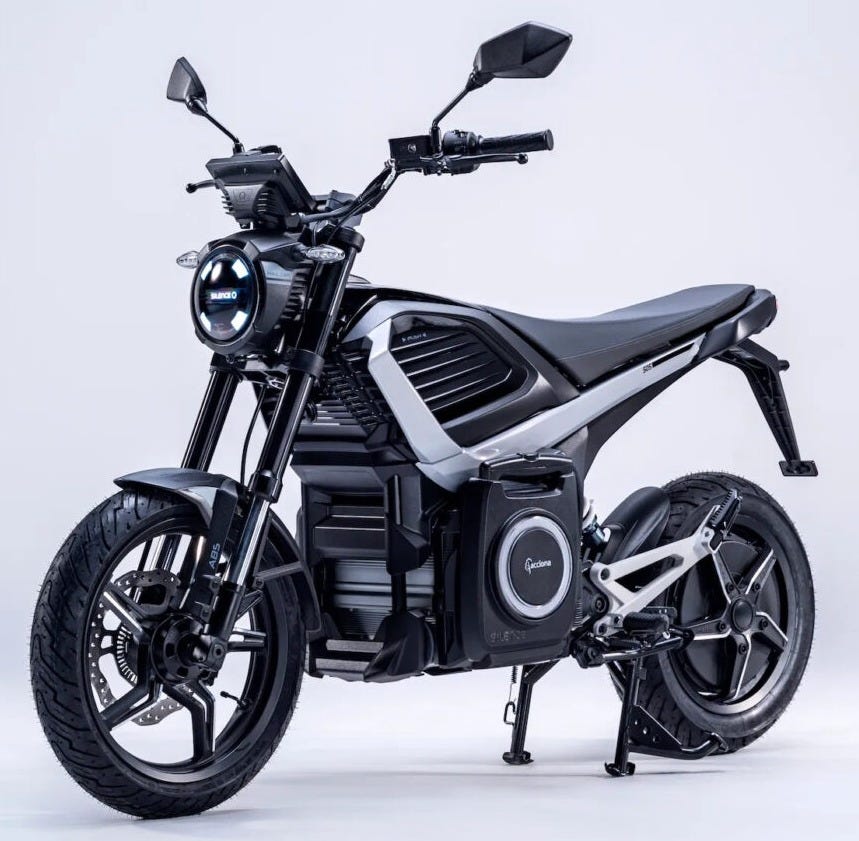
In making the S05 Weekender, Silence maintains the same battery pack and borrows from the same family of motors, allowing it to optimize scale.
If the S05 Weekender goes low, the GT-SX prototype indicates what can be done if Silence goes high.
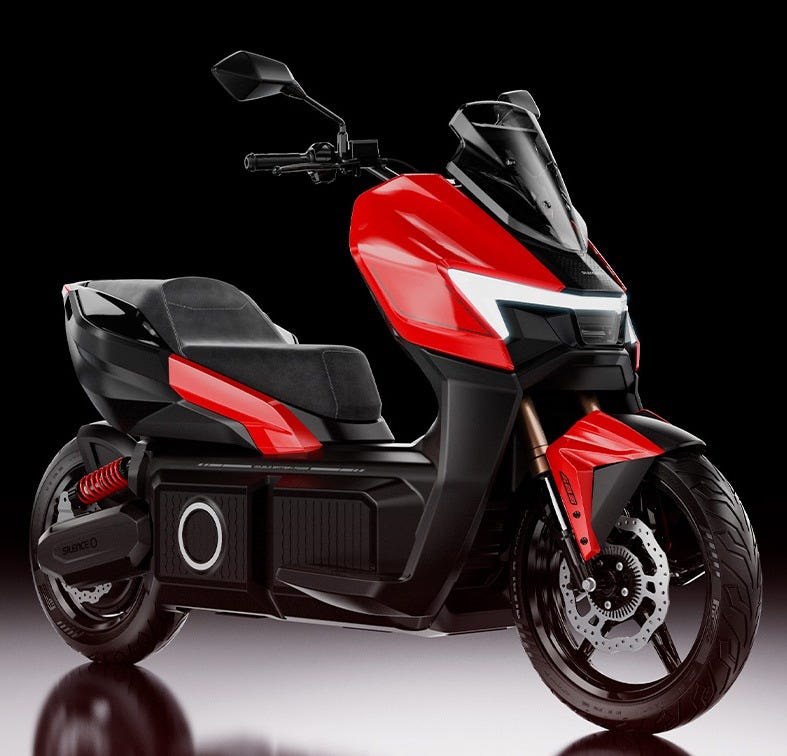
The GT-SX carries two trolley battery packs (a total of 11.2 kWh), and the company indicates a 200km range. However, this is still a prototype, and a market introduction may take some time.
Livewire
Livewire suffers from low sales as the premium electric motorcycle market refuses to take off. Investor and part-owner KYMCO has problems of its own, with the RevoNEX remaining a concept till now. This EICMA was the meeting of both partners to announce the joint development of maxi scooters for the European market.
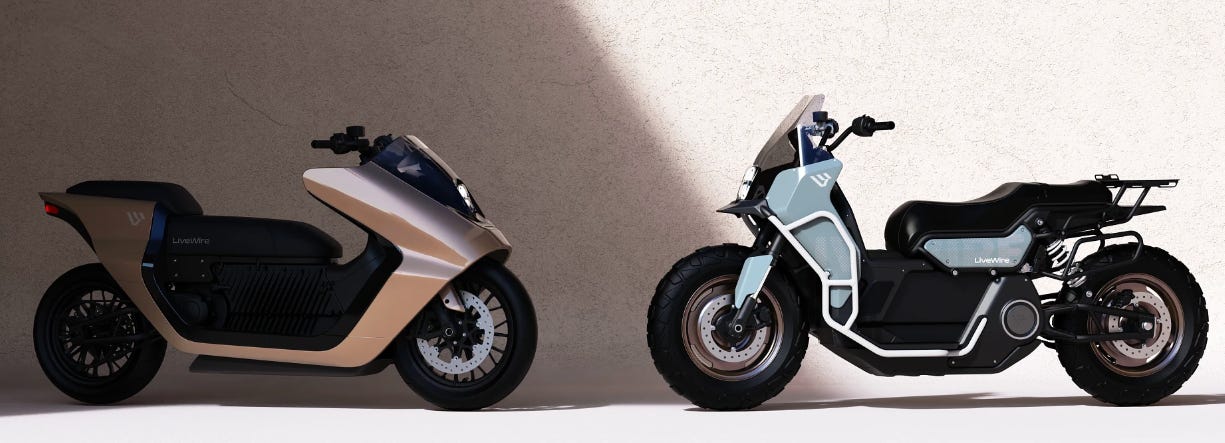
Two sketches were released, and it is too early to comment on them. They are at that early stage. We know that KYMCO plans to use the S2 powertrain to engineer these scooters. The S2 has a structural battery pack (Arrow platform), and it would be interesting to see how KYMCO turns it around for use in the scooters. The scooters are expected to go on sale in H1 2026.
KYMCO
KYMCO had yet another variation on the RevoNEX concept. The new concept is more radical-looking than the previous iterations, and KYMCO says it has more ‘Italian elegance.’
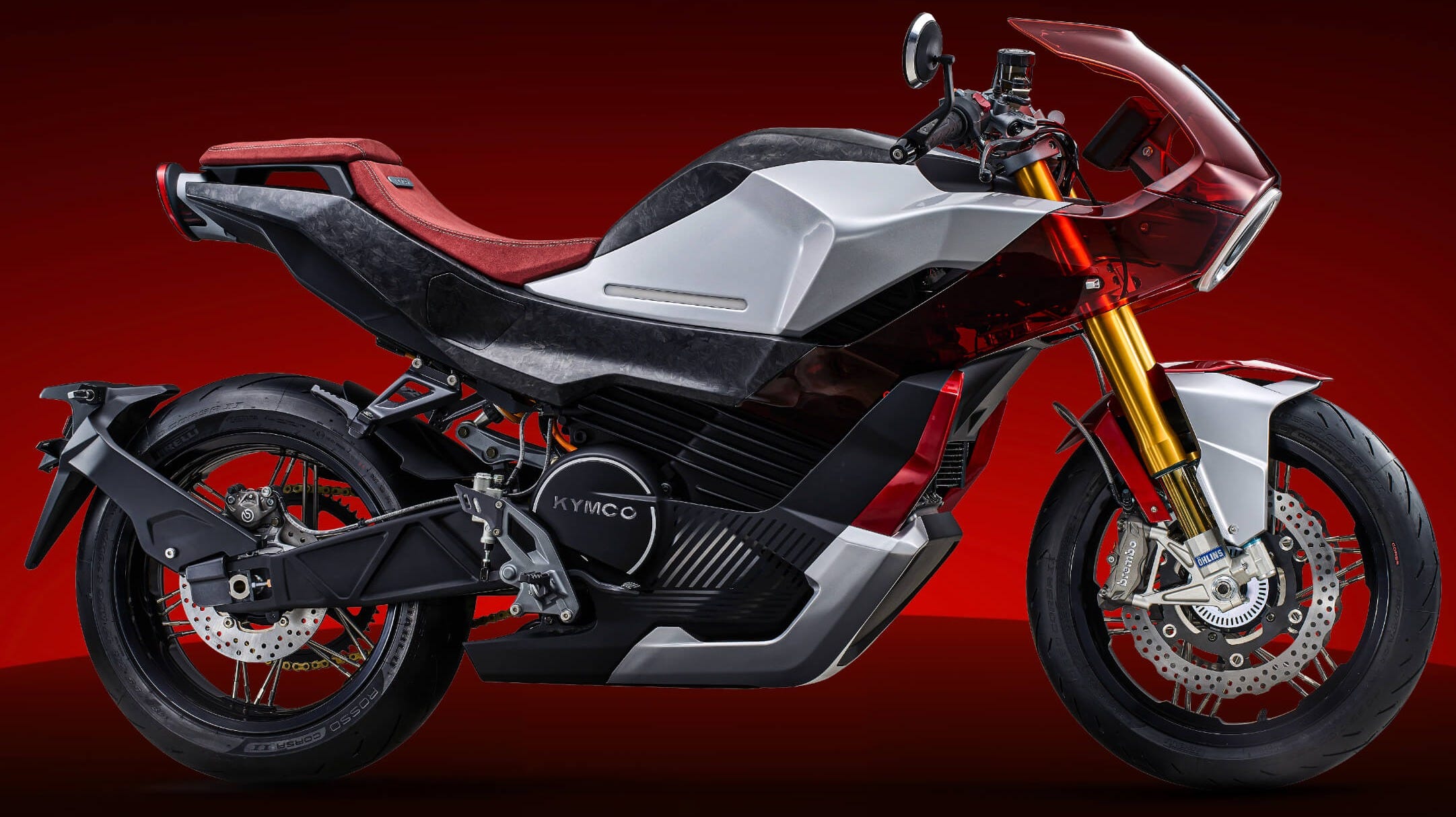
We believe most of the hardware under that skin is from Livewire S2. No dates for the industrialization of the RevoNEX have been provided, though KYMCO reiterated that the RevoNEX would have a gearshift and make some type of sound.
Balistron
Balistron is a startup based in Turkey with the European market in mind. They unveiled their first products—the TS 16.12 faired sports bike and the TN 16.12 naked commuter bike. Clearly, the Turkey-based entrepreneurs have taken help from Chinese factories, as some of the design and engineering ethos seem to have sprung straight out of the Chongqing playbook.
Take the TS 16.12 below—an overdesigned styling copy of a previous-gen Fireblade. While the manufacturer takes pains to make a competent full-faired machine, the choice of a hub motor is baffling. We also cannot figure out why a 130 kph capability machine would need twin 300 mm disc brakes and Pirelli Diablo Corsa tires. Also, the faux exhaust pipes look cute.
Still, Balistrom is a competent effort from Turkey and a brand we would keenly watch in the future.
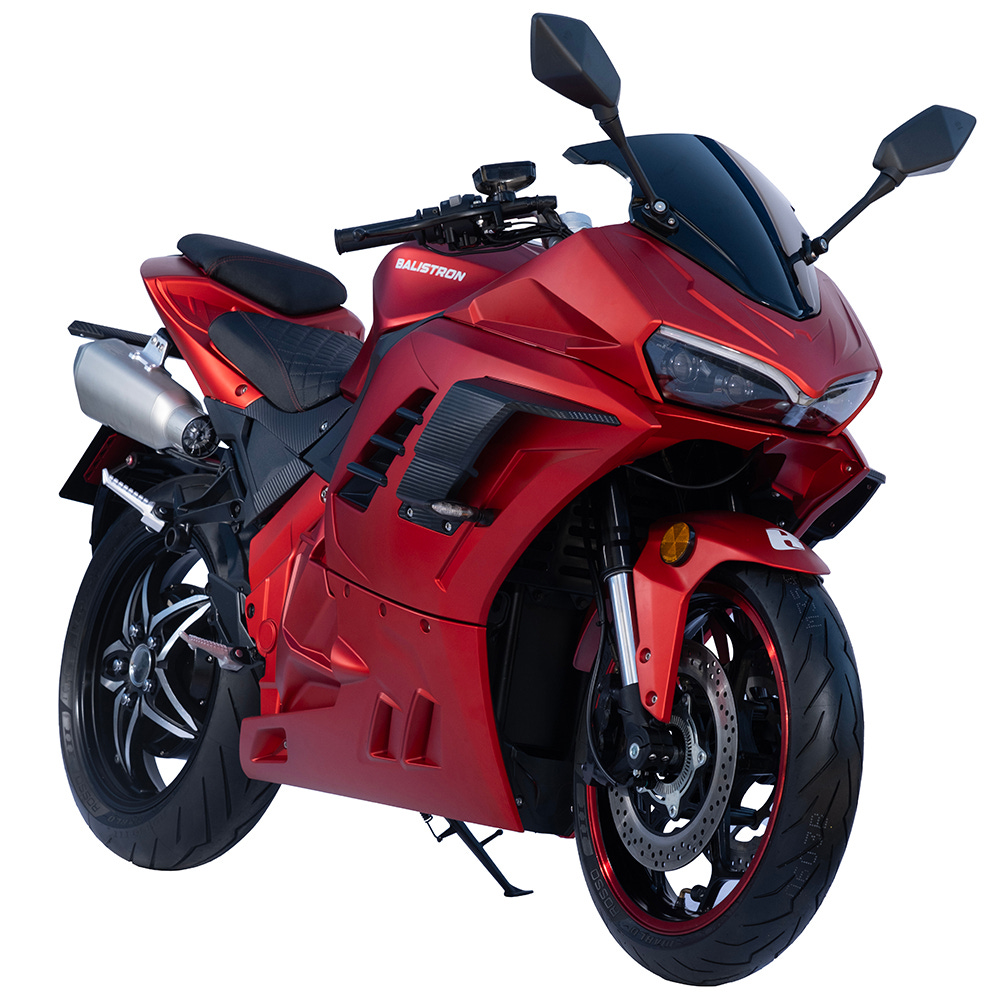
Can-Am
Can-Am made the European debut of the Pulse and Origin electric motorcycles. Both carry an 8.9 kWh pack, giving the Origin ADV a 145 km range and the Pulse naked motorcycle a 160 km range. An A2 license-friendly, unique swingarm-mounted motor with 35 kW peak power does duty in the Pulse and Origin.
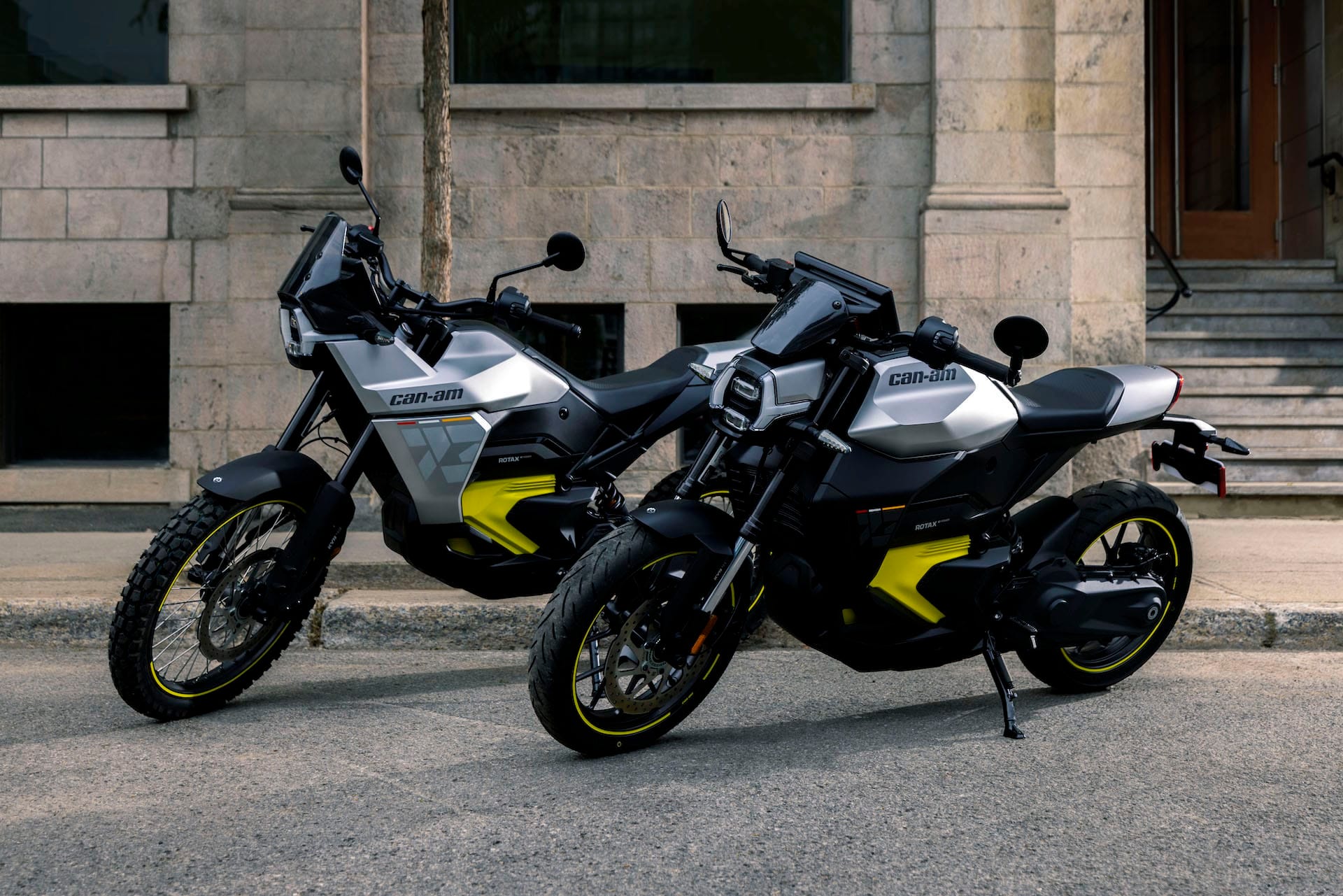
CF Moto
With KTM and Husqvarna unveiling electric motocrossers at EICMA, Chinese partner CF Moto was not far behind. In addition to its entire ICE range and multiple interesting ICE models, CF Moto also unveiled the CF-X electric motocross.
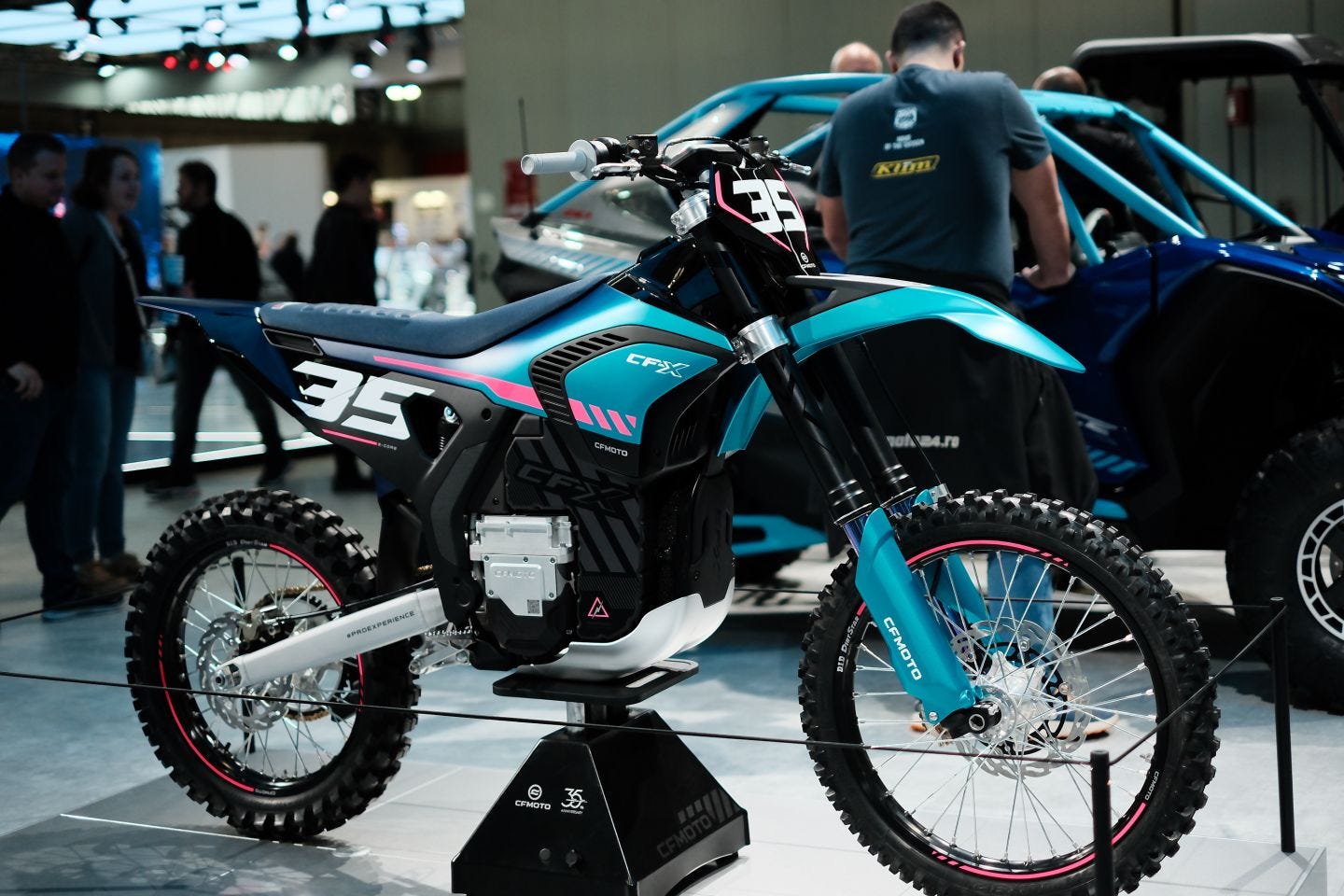
While the company has been offering electric scooters and motorcycles under the Zeeho brand, the CF-X carries the CF Moto name.
The CF-X is a 450cc motocross equivalent with a 125 kg overall weight—7 kg less than the Stark Varg. To remain competent, the CF has to be cheaper and have at least a 50 kW motor. We don’t have the details yet, but a radiator mounted to the rear of the machine suggests that the motor is capable and high-revving. This is further assured by the 400V architecture that the CF-X carries. A 960mm seat height also suggests that this is a serious machine, and CF Moto had to extract every cubic mm of packaging space for the battery. Again, the battery specs have not yet been revealed.
Yamaha
Yamaha didn’t do anything electric at EICMA but made a big announcement on the sidelines: It invested in the French EV company Electric Motion SAS. Not many details have been provided, including the magnitude of the investment.
Yamaha is also an investor in an India-based scooter startup – World of River.
Electric Motion (EM Brand) is an electric trial and off-road motorcycle specialist. EM motorcycles have succeeded in the Trial World Championship, the FIM E-Xplorer World Cup —the world’s premier electric off-road motorcycle racing series— and other events.
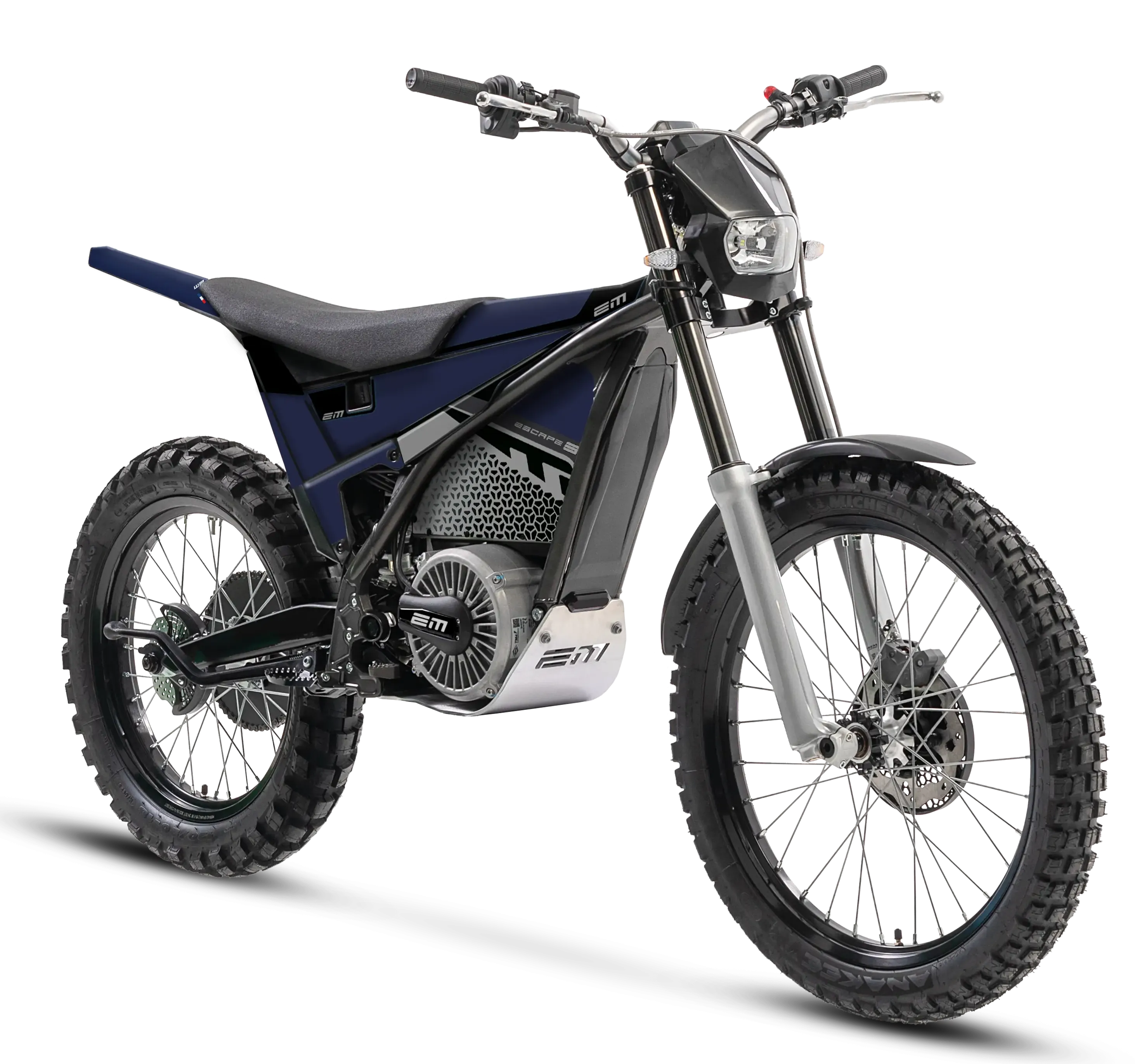
In March this year, Yamaha filed design patents for an electric off-road motorcycle. The investment may result in a joint development or collaboration.
Naxeon
Naxeon is a China-based startup that developed the futuristic I AM motorcycle. The compact motorcycle has 17” front and rear wheels and a 1320mm wheelbase. A 10.5 kW (peak) motor promises a 115 kph top speed, and a 6.5 kWh battery assures a 179 km range.
All of the above are competent mid-level practical commuter specs; what makes the I AM interesting is the front girder forks and the extensive use of recycled materials.
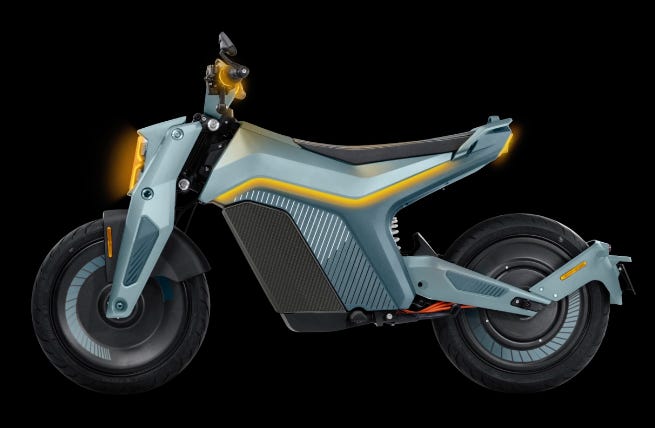
Zero
Someone at Zero looked outside the window and realized that brands like Sur-Ron and Talaria were making merry while Zero struggled. Low-priced, lightweight off-road motorcycles seem to be the favorite of American youth.
At EICMA, Zero rectified this product gap by unveiling two new motorcycles. Further, up to six low-price models are promised to amp up the bottom of the range.
The first motorcycle is the XB, a lightweight machine with a 45 kph capability and an off-road flavor. It is street-legal. It weighs only 63 kg, but its 7.5 kW motor still delivers 373 Nm at the rear wheel.
The battery pack is only 2.4 kWh, kept small due to weight considerations. With that, the XB can deliver a 75 km range. There is an 800W onboard charger.
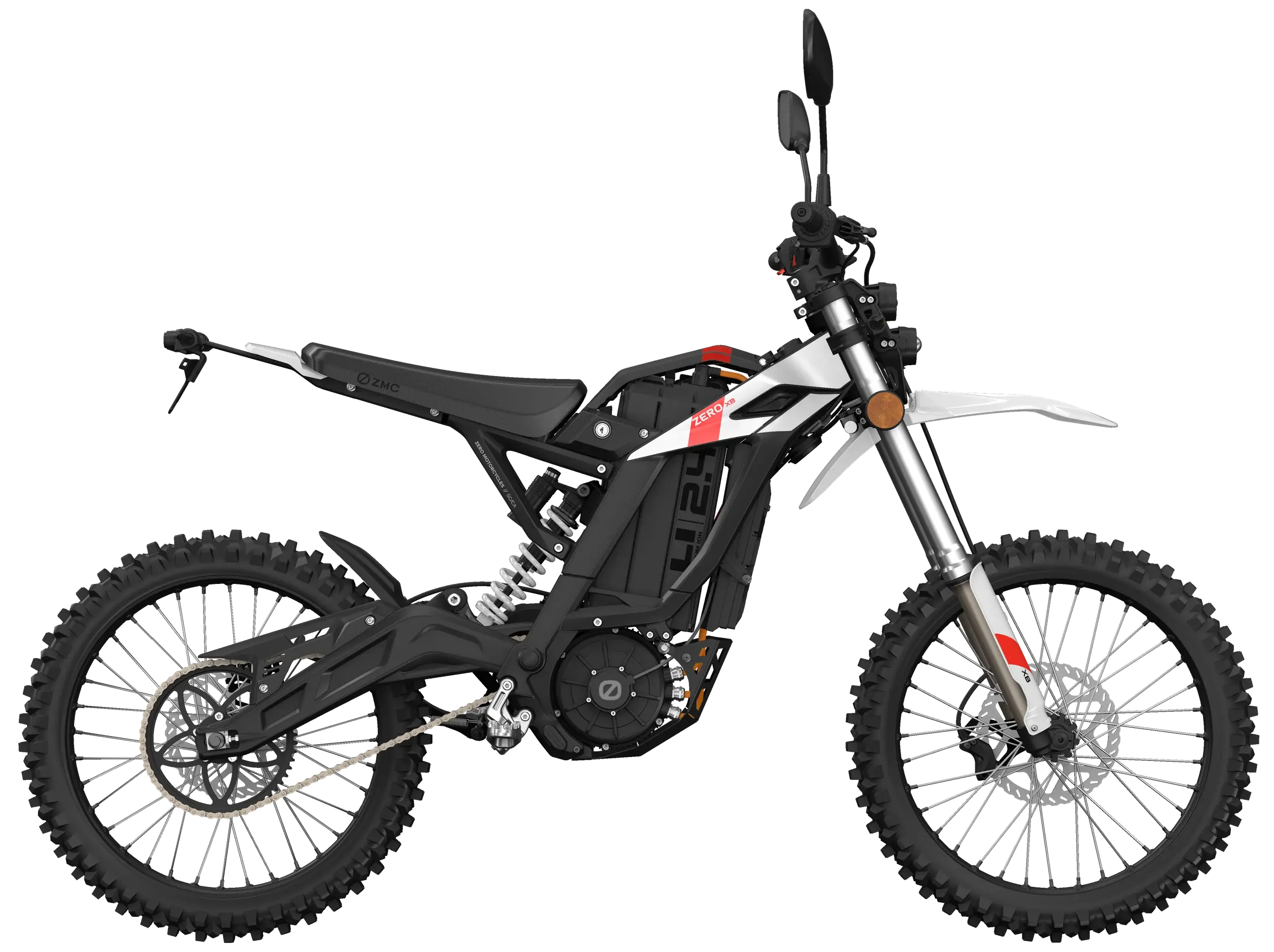
In comparison, the XE is more grown-up. It weighs 101 kg and has a 15.5 kW / 635 Nm motor that can propel it to 85 kph. It also gets a 4.3 kWh battery for a claimed 100 km range. It also has an 800W onboard charger.
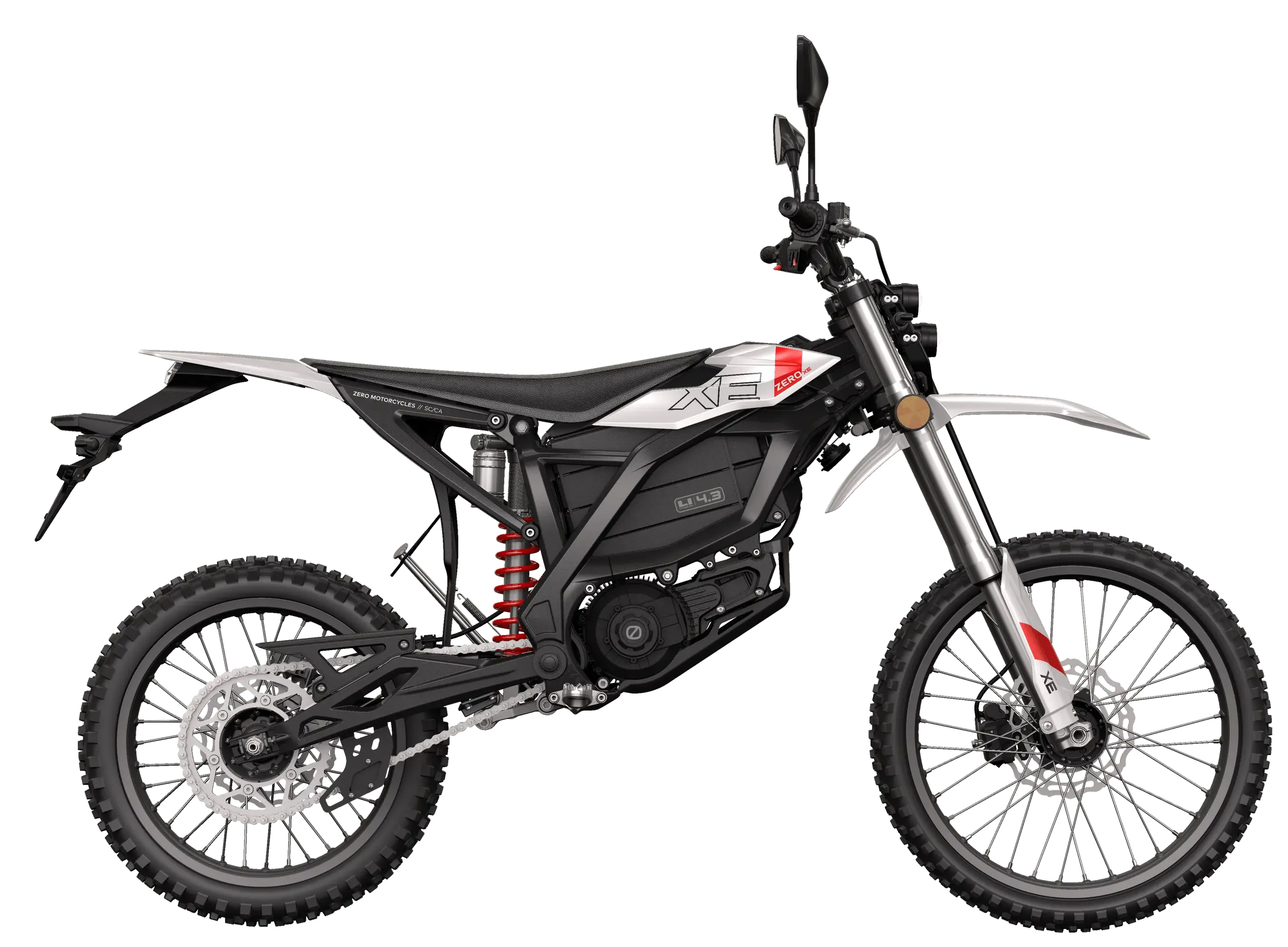
The XB and XE are important for Zero. The brand’s sales refuse to take off as most Americans find the motorcycles too expensive. That should change now. The new models, collectively called the X-line, are some of the cheapest electric motorcycles in the American market. The XE retails at USD 6495, while the XB retails at USD 4195.
Zero also teased a minibike concept at EICMA. This is the Neutrino, and detailed specs are unavailable, except that Zero filed design patents for this concept in July 2024.
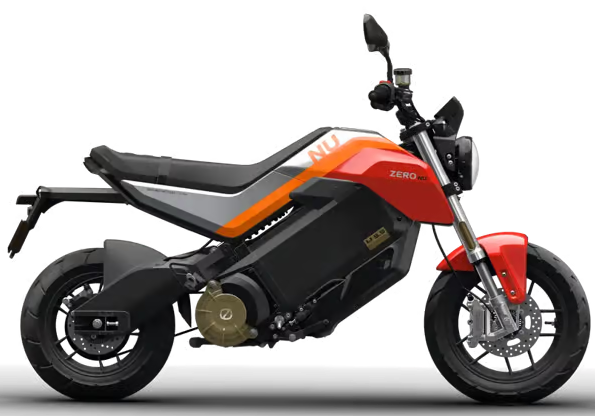
A new powertrain with a sub-15 kW motor is under development. The specs also include a 105 kph top speed and 120 km of range. Unlike most e-minimotos already available in the market, Zero is targeting to pack an onboard charger with the Neutrino.
Royal Enfield
Another brand that made it a show was Royal Enfield, which launched an electric sub-brand at EICMA. The Flying Flea sub-brand would be RE’s electric mainstay for the future. RE’s Siddarth Lal was candid with the plans at the press event.
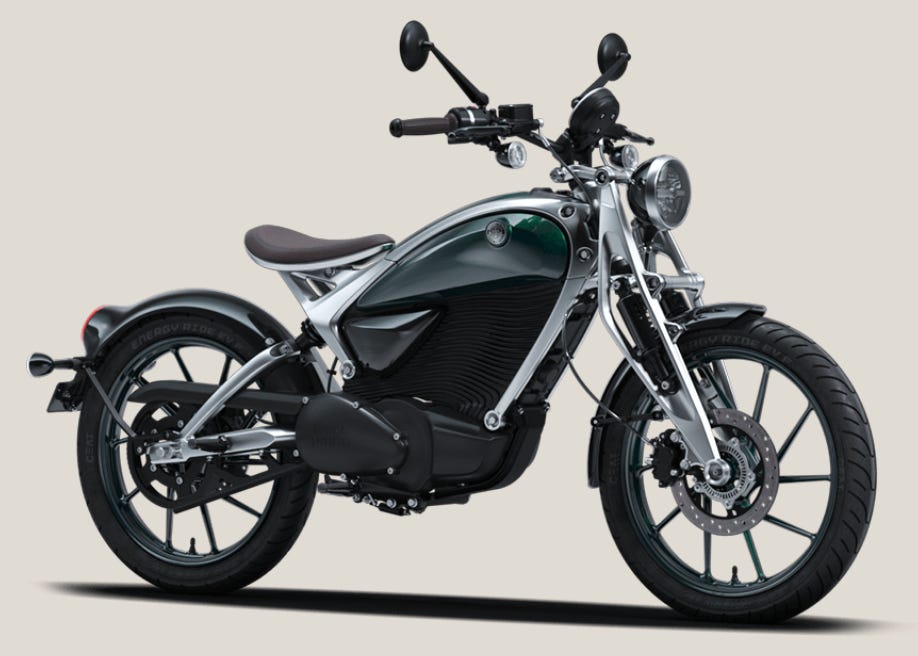
With Flying Flea, RE wants zero overlaps with the ICE part of the business. REs are bulky and slow, with much road presence and a sense of purpose. The Flying Flea is designed to exude a sense of lightness and usability and be manageable while maintaining a heightened aesthetic sense.
The C6 is the first product unveiled. It is a single-seat Bobber with girder forks. We don’t see any dynamic gains from it. It looks good, but the increased linkages and the forged aluminum would increase BoM costs.
(We would do a longer discussion on RE electric plans in one of the upcoming editions, so it is okay to leave this here)
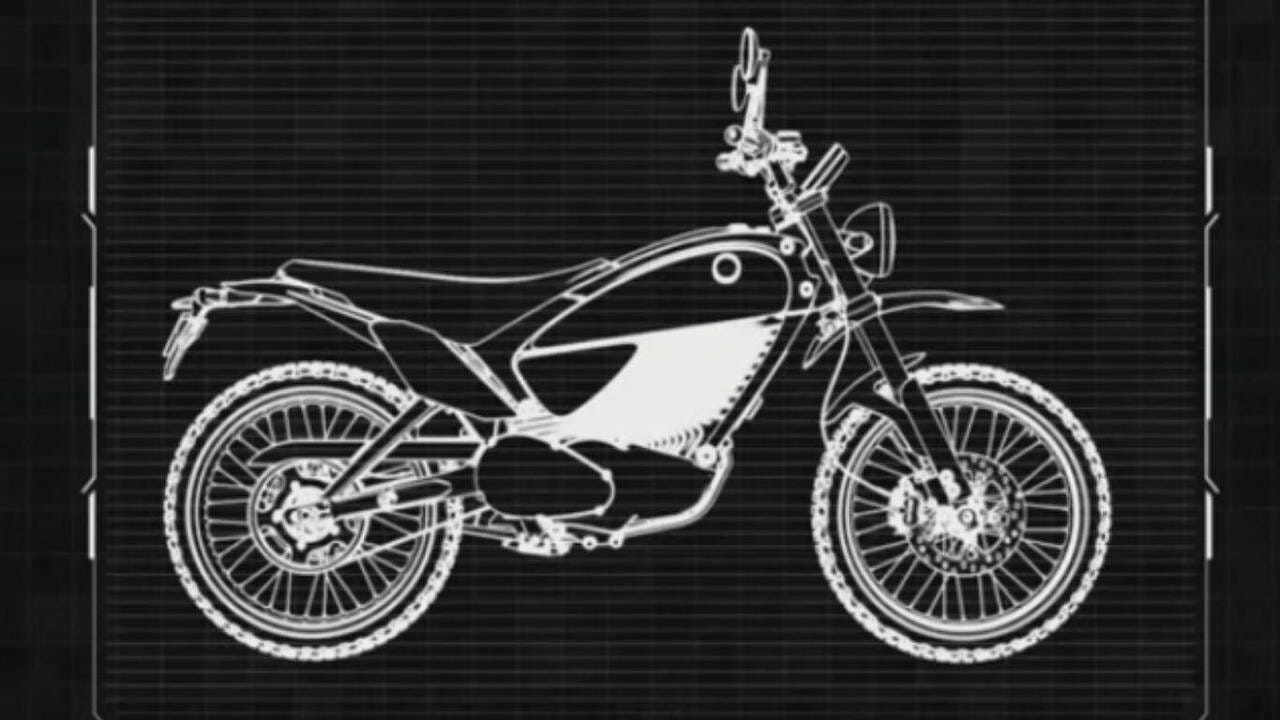
VMoto
VMoto went beyond product launches and hosted a workshop called Electric Mobility Solutions (EMS). The workshop was designed for fleet operators and entrepreneurs wanting to enter the electric mobility business. We can see the company is positioning itself as a manufacturer and supplier of fleet products, where VMoto handles the design, development, and manufacturing, and operators worldwide do the deployment. This is from what we had written a few weeks back on VMoto.
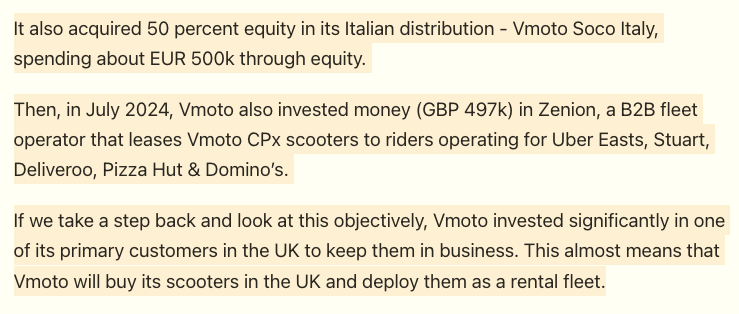
VMoto wants to work closely with, if not control, its distributors and fleet operators in key markets. In addition to the above, VMoto also works with Vammo in Brazil.
The EMS at EICMA was part of VMoto’s communication about the key parts of its new ecosystem, which it is defining. The main parts are the batteries—VMoto remains a low-volume manufacturer, and battery standardization is a need, not a desire. The company has standardized the 74V system with two battery sizes: 30Ah and 45Ah. Most VMoto vehicles have already moved to one of these batteries. Most importantly, the VS fleet range is on these batteries. This is important as it reduces operators’ maintenance of stock.
VMoto’s new batteries are designed for fast charging, allowing an 80 percent charge in 30 minutes to further drive operator efficiencies. VMoto also offers battery Swap stations and Super Fast Charging Stations for fleet deployment. The charging stations allow the charging of two vehicles on either side of the station using Type 2 connectors.
VMoto’s fleet software solutions and financial and strategic consulting for operators support the hardware.
While this was all paraphernalia to build the VMoto narrative, VMoto’s most important launch was the VS4 motorcycle. This is a commuter motorcycle; the VS badging indicates it is specifically for fleet deployment.
Looking at the practical styling, (suggested) rugged construction, a long saddle, and what looks like extensive use of pigmented plastics, the VS4 is a no-frills, all-business workhorse. The VS4 would likely target the African market, where TailG and Horwin have made big inroads while VMoto has been sitting it out.
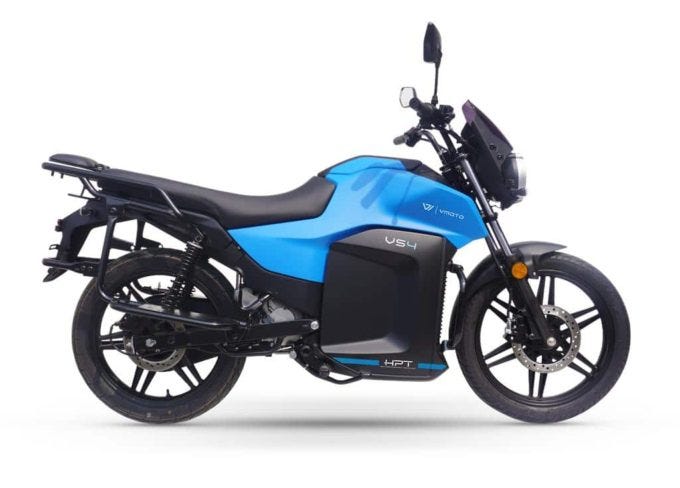
The specs are sparse, but we know a 4.0 kW mid-drive motor is mated to a chain drive. The large battery compartment suggests 2X 3.33 kWh (74V45Ah) battery packs. VMoto is likely targeting fleet operators like Spiro, Roam, and Ampersand with the VS4.
Zentropy
Considering South Korea’s geographical size, it is surprising that battery swapping has not yet become big there. That seems to be changing now, with battery-swapping scooter manufacturing startups dotting the startup arena.
Zentropy is a South Korean brand that has launched the Z electric scooter. The tourer-format scooter has fairly standard specifications, riding on 14”/14” front and rear wheels. There is a 9.0 kW motor to keep things moving. The biggest difference is that it comes with battery swapping. Each Zentropy battery is 1.7 kWh, and the scooter can take two.
Zentropy has already rolled out 300 swapping stations in Seoul.

E3Mobility
The E3Mobility group is another Korean startup with interesting scooters at EICMA. Like Zentropy, it has also rolled out a battery swapping network.
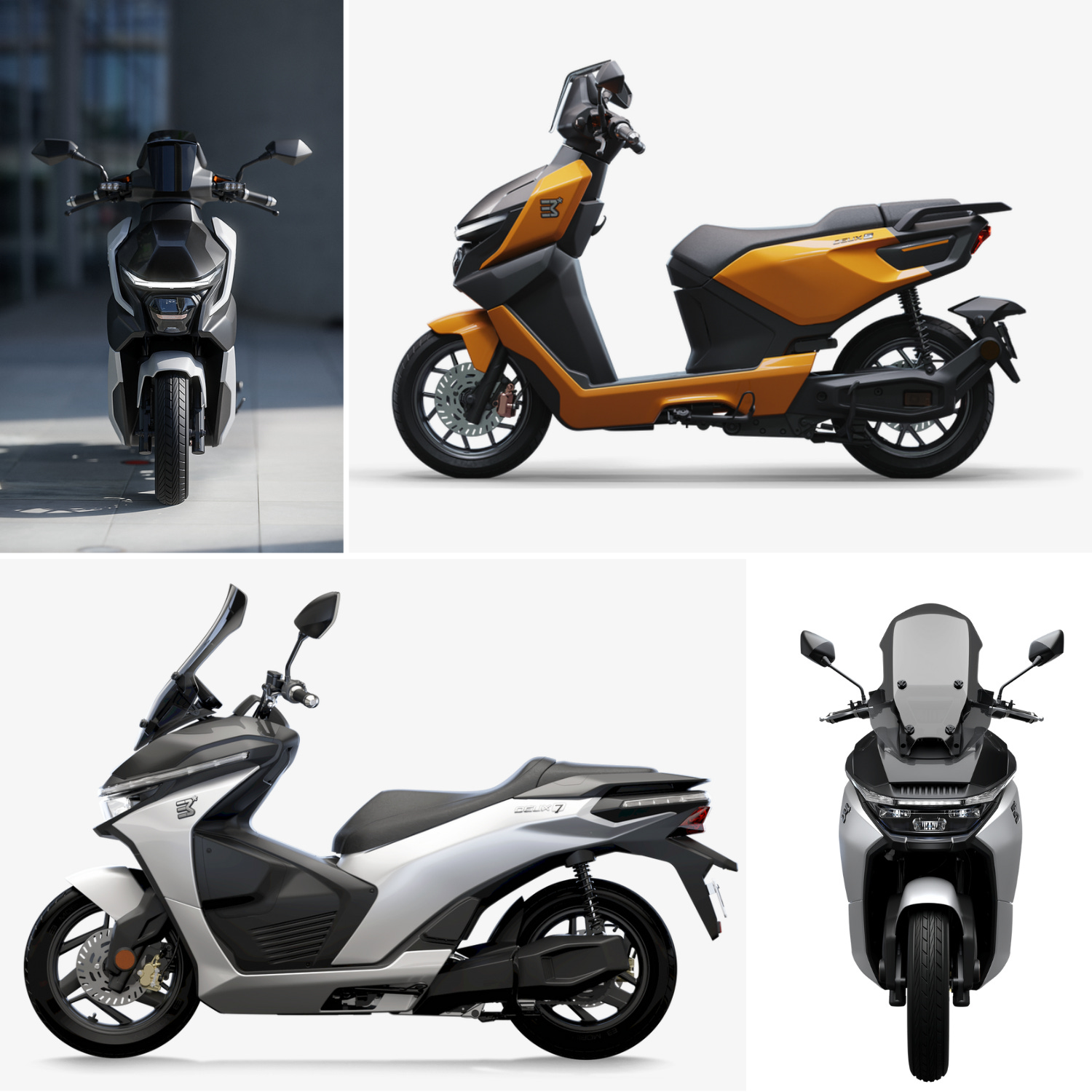
The Deux 5 is a sports commuter scooter, and the Deux 7 is a larger touring scooter body style. Both carry two batteries of 1.44 kWh each. The Deux 5 has a 5.0 kW mid-drive motor from Hyundai Kefico that allows a top speed of 90 kph, and the Deux 7 has a 7.0 kW mid-drive motor from the same supplier for a top speed of 100 kph.
KTM
KTM Freeride E sales have not been great, and the brand needed a refresh. This was an important EICMA for KTM Electric, as it unveiled the 2025 Freeride E LV motocrosser. This is a low-voltage street-legal dual sport with 19.2 kW of peak power and a 95 kph top speed. A 5.5 kWh battery supports the 109 kg dual sport.
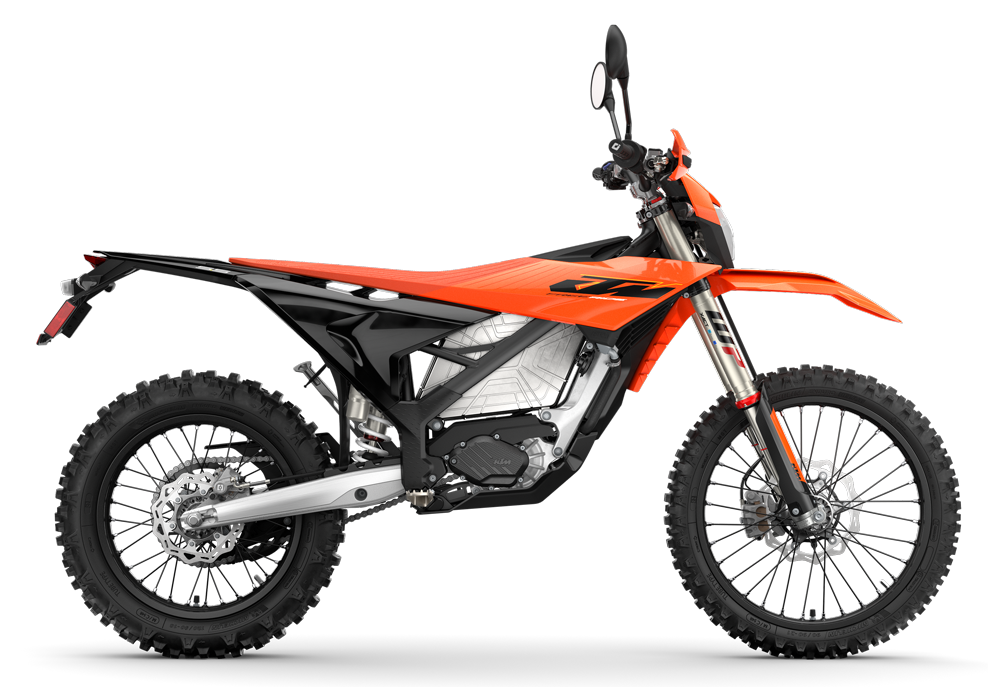
The LV Freeride is arriving on the market nearly two years late, but KTM is making up for it with a Husqvarna variant.
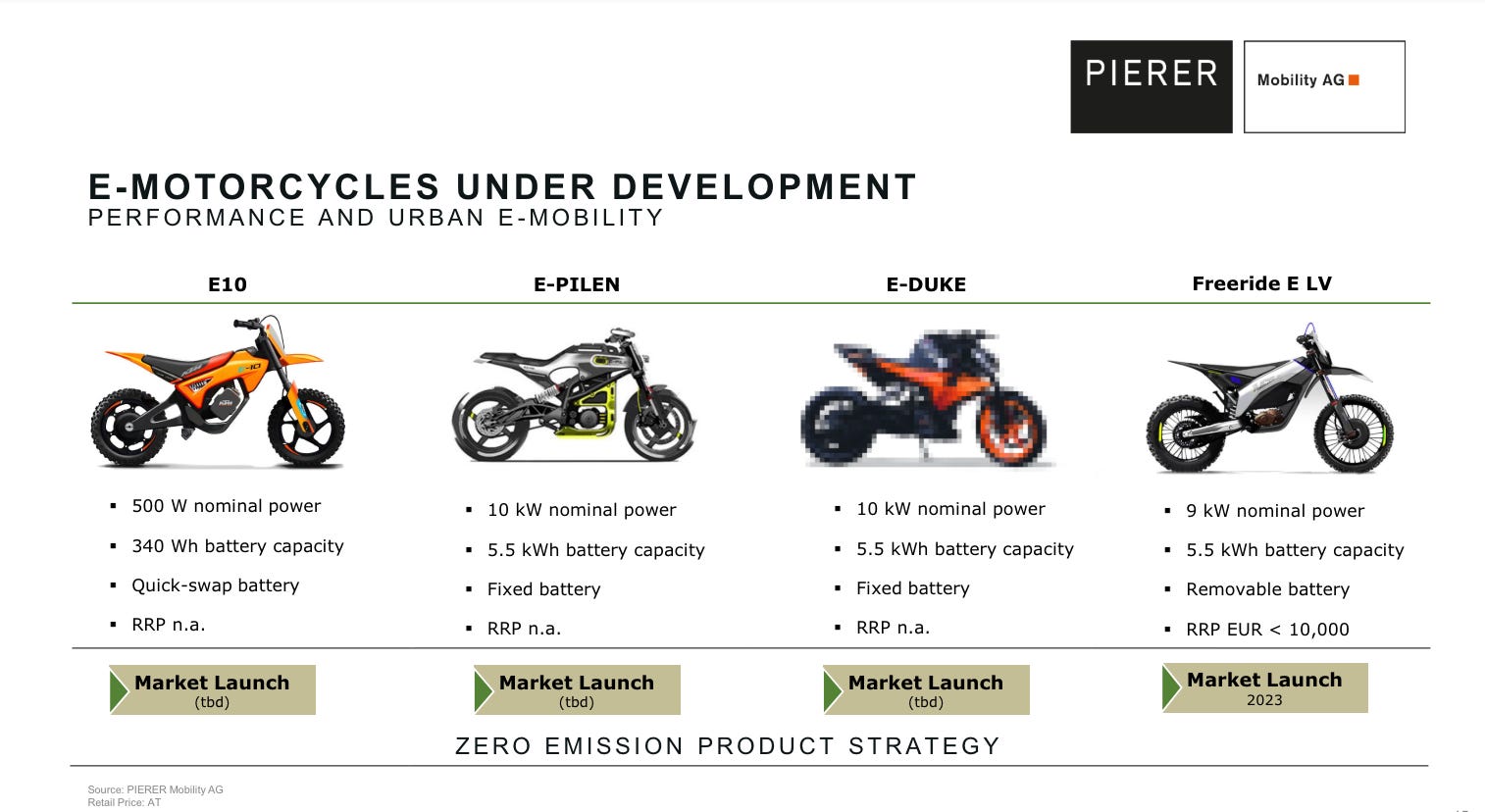
Husqvarna
Sister brand Husqvarna had the Pioneer, the Husqvarna variant, on the Freeride E LV platform. The specs are very similar.
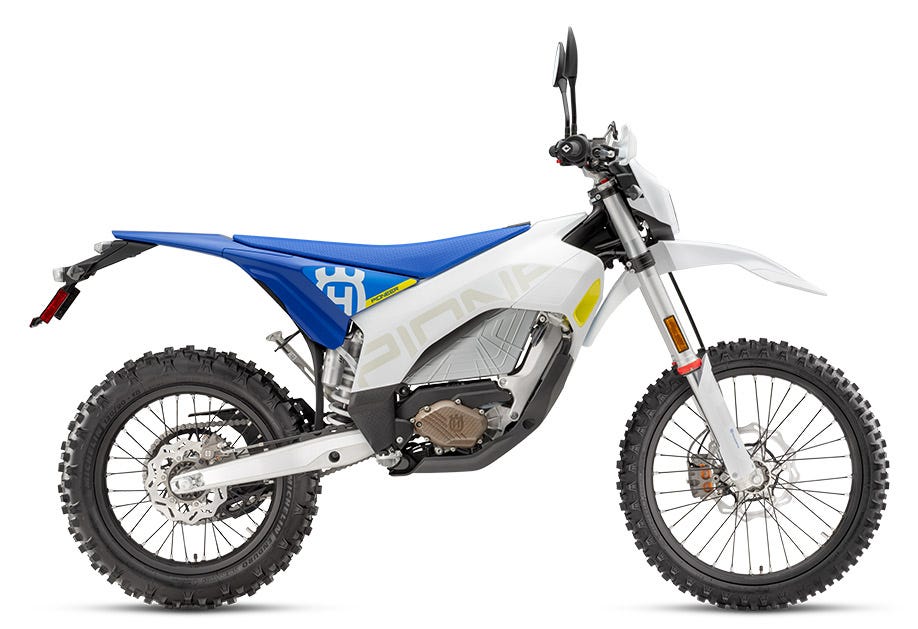
Ultraviolette
India-based Ultraviolette, funded by TVS Motor, has developed the F77 mid-size electric sports naked (A2 license). The competent product is priced high for the Indian market but may just work in the European market. At the EICMA, Ultraviolette displayed the latest version of the F77 motorcycle.

The F77 is in production in India, and the homologation in Europe has been completed.
Also, at the show, Ultraviolette had the F99 concept. It’s an HV architecture full sports motorcycle that the company is working on. Paper specs put things at 400V, 265 kph, 90 kW, and 178 kg. For now, it’s a concept.
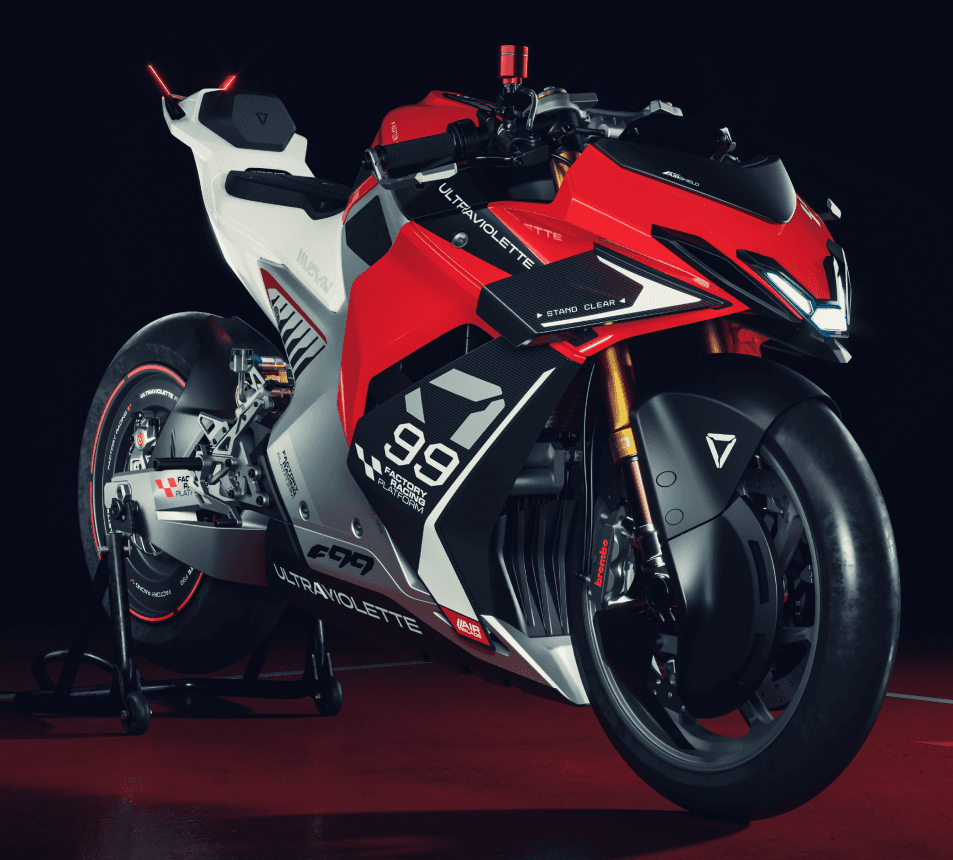
Another interesting concept was the Ultraviolette Concept X, an ADV concept that seems to be sharing the F77 base.
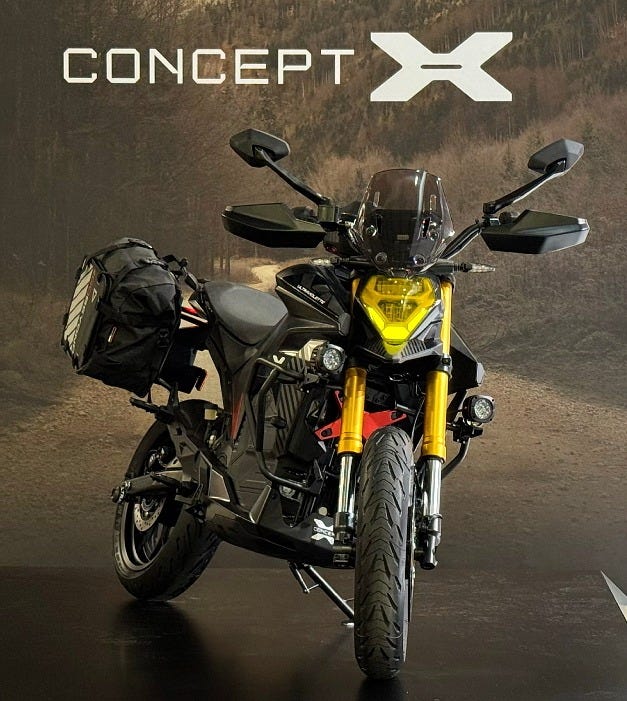
Platum
Italy-based Platum had the e-moped 500. It was designed by Pininfarina, has input from Fiat design studio, and pays homage to the Fiat 500.
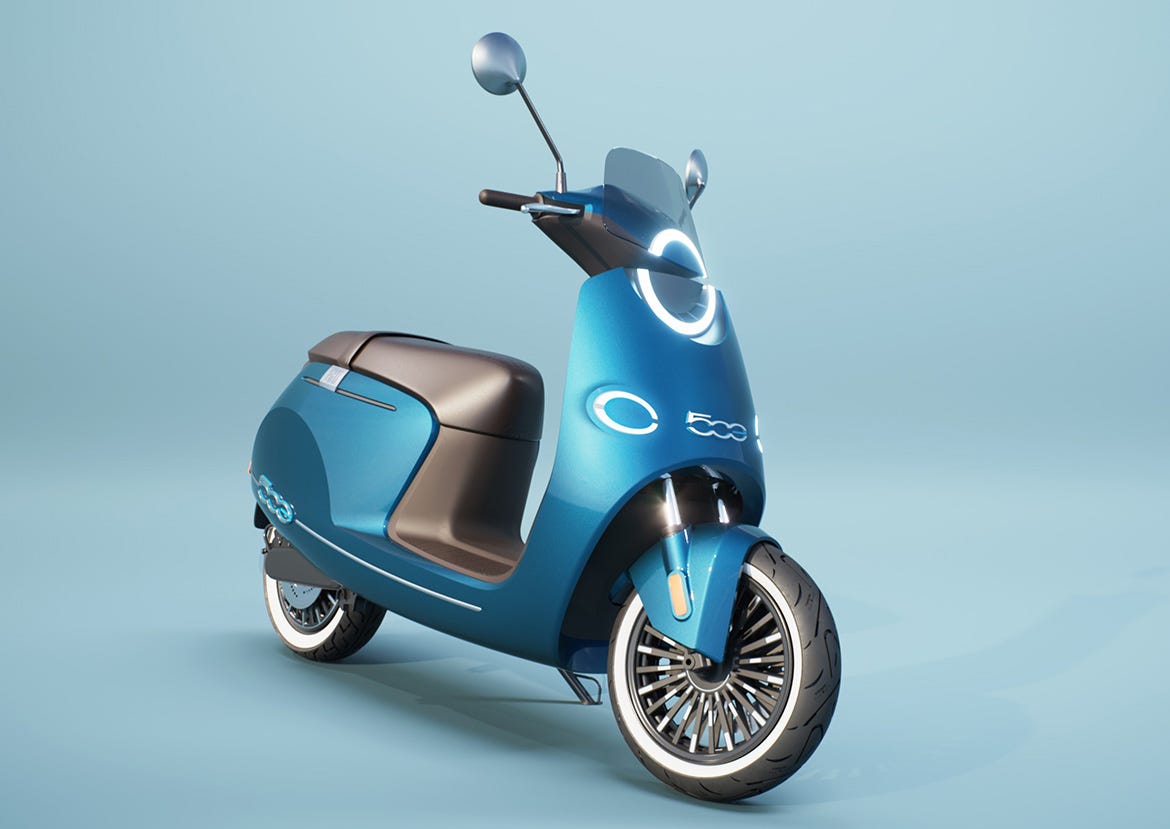
The specs are a 115 km range, removable batteries, and an 80kph top speed. But none of that matters, just like half the things the Italians conjure. It just looks fab!

